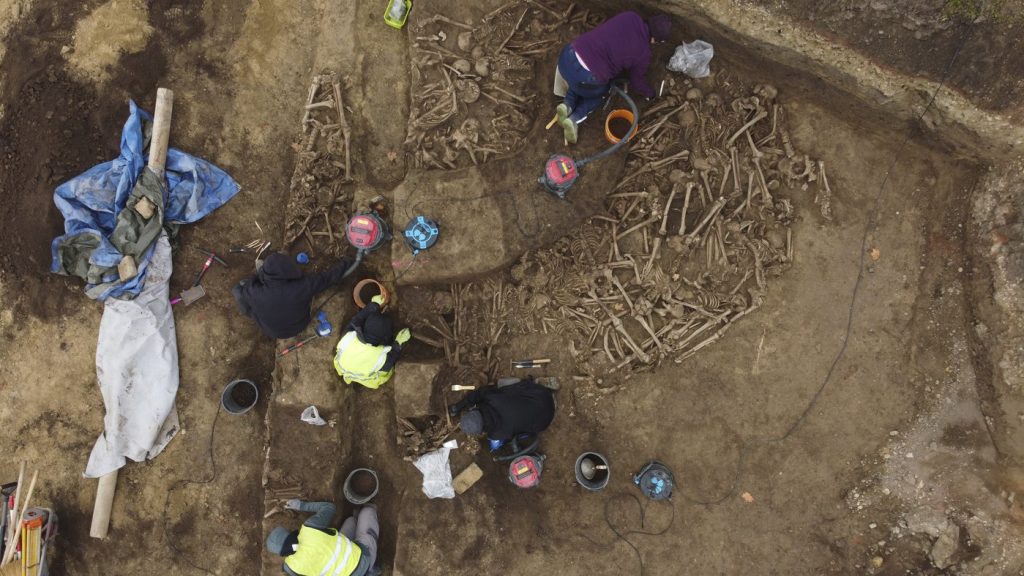In October 2023, construction crews engaged in the renovation of a soccer field in the Simmering district of Vienna stumbled upon an extraordinary archaeological discovery: a mass grave containing intertwined skeletal remains dating back to the 1st century A.D. This grave is believed to hold the remains of warriors possibly involved in battles among Germanic tribes during the time of the Roman Empire.
On a recent Wednesday, experts from the Vienna Museum presented their findings to the public. This mass grave has been linked to a significant and catastrophic military event, marking the earliest known instance of fighting in that region. A total of 129 bodies have been confirmed thus far, with excavation teams estimating that the number of victims could exceed 150—a unprecedented find in Central Europe.
Michaela Binder, the lead archaeologist on this dig, stated, "Within the context of Roman acts of war, there are no comparable finds of fighters. There are large battlefields in Germany where weapons were unearthed, but finding the dead in this manner is unique in the entire history of Rome." It is noteworthy that soldiers within the Roman Empire were generally cremated until the 3rd century A.D., making this discovery particularly unusual.
The manner in which the bodies were deposited in the grave implies a hasty or chaotic disposal, resulting in various injuries on each skeleton—especially to the head, torso, and pelvis. Kristina Adler-Wölfl, head of the Vienna city archaeological department, noted, "They exhibit a variety of battle wounds, which rules out execution. This indeed represents a battlefield." Some of the detected injuries include wounds from swords, lances, and blunt trauma.
All of the identified victims were male, predominantly aged between 20 to 30 years, and displayed signs of relatively good dental health. Carbon-14 dating has placed the remains within the timeframe of 80 to 130 A.D., which correlates with artifacts found at the site, including armor, helmet cheek protectors, and nails from Roman military footwear known as caligae. The most indicative artifact was a rusty dagger characteristic of usage between the mid-1st century and the onset of the 2nd century.
At this stage, only one of the victims has been confirmed as a Roman warrior. Ongoing research aims to utilize DNA and strontium isotope analysis to further clarify the identities of the fighters and determine their allegiances in this conflict. Adler-Wölfl suggests that the current prevailing theory connects this discovery to the Danube campaigns under Emperor Domitian, which occurred between 86 and 96 A.D.
This significant find not only sheds light on ancient military conflicts but also provides early indications of the founding of a settlement that would eventually evolve into modern-day Vienna. The implications of this discovery for both historical and archaeological studies are immense, leading to further investigations into the region's past military activities.










